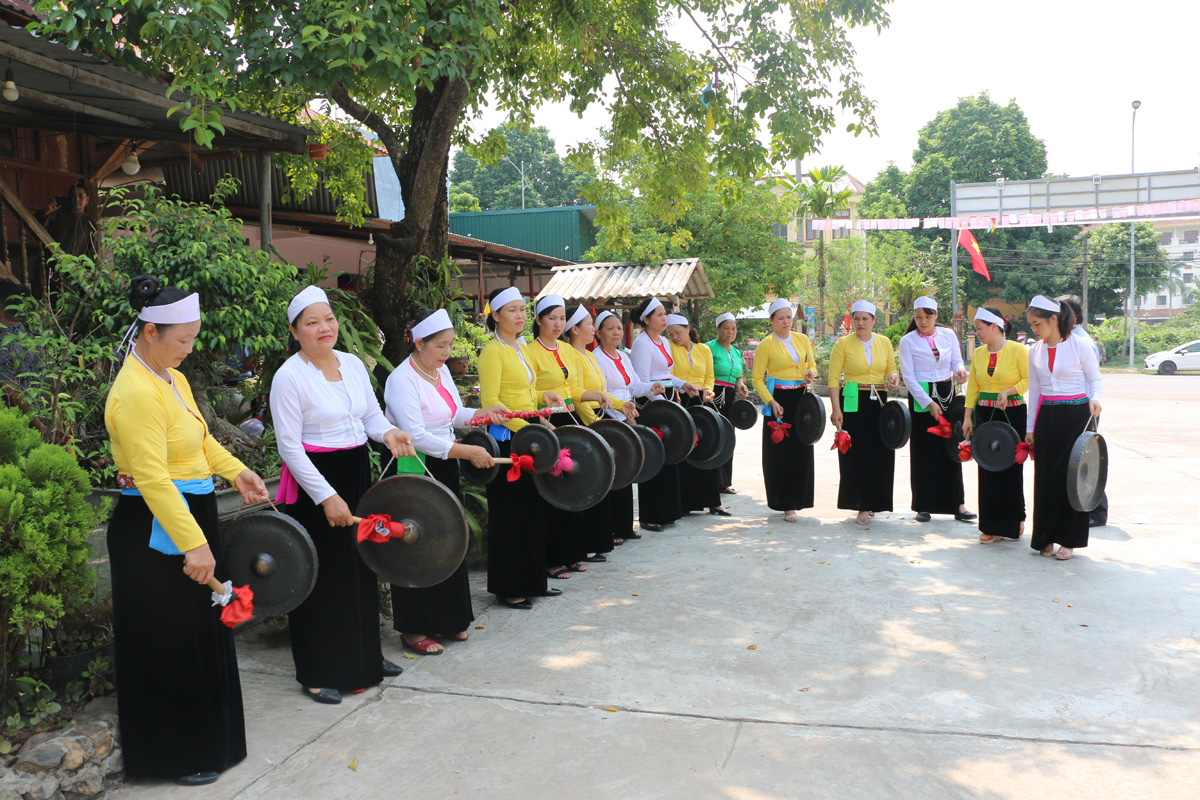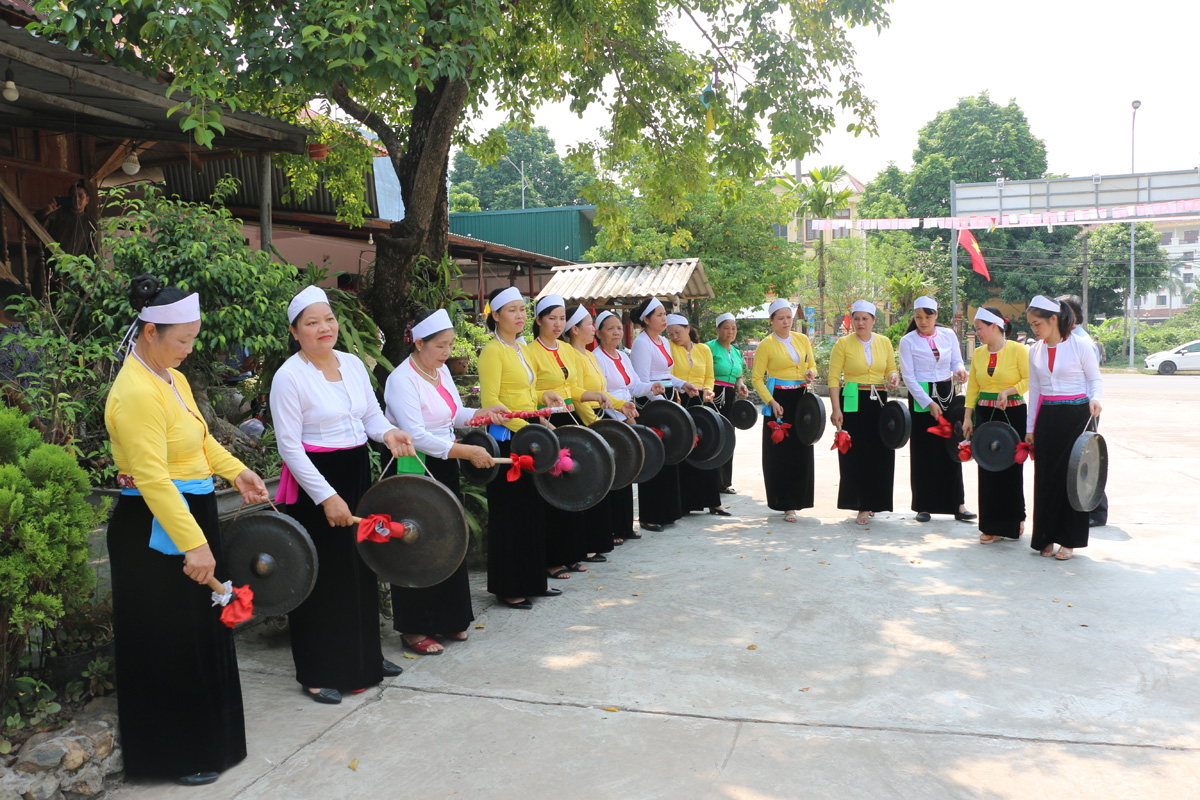


 The women in Thinh Lang ward (Hoa Binh city) often use
gongs in important local festivals or events.
The women in Thinh Lang ward (Hoa Binh city) often use
gongs in important local festivals or events.
Over the past years, the appropriate uthorities have developed programs and action plans on the culture and conservation, promoting the values of the intangible cultural heritage. Specifically, up to now, they have invested in the restoration, embellishment, preservation and construction of a traditional cultural village, dozens of cultural and community villages at the provincial level; nearly 30 scientific topics on the culture and the ethnicity have been carried out; nearly 50 classes of folk art transmission, hundreds of ethnic minority literacy classes have been invested to be carried out; 59 festivals have been restored and maintained.
Based on the inventory results of the intangible cultural heritage of the ethnic groups in the province, from 2013 the Provincial Party Committee and People's Committee have had a policy to allow to collect, research and set up scientific record for 2 intangible cultural heritages, that is Mo Muong Hoa Binh and Muong Gong Hoa Binh, and they have asked the Ministry of Culture, Sports and Tourism to decide to recognize them in the list of the national intangible cultural heritage in 2016. The have set up the record for the intangible cultural heritage of Mo Muong Hoa Binh to submit to UNESCO as a typical intangible cultural heritage in need of urgent protection.
Determining the the intangible cultural heritage of the Hoa Binh ethnic groups as the invaluable property left by the ancestors to the younger generation today and tomorrow, is the soul of the national culture. The work of preserving and promoting the cultural heritages is of great importance in educating the young generation about the national cultural and historical traditions. Besides, it is also a means to introduce and promote the images, the land and the people for domestic and foreign tourists, creating conditions for the implementation of Hoa Binh tourism development strategy, contributing to the growth of the province’s social economy. Recently, there have been positive signals about the conservation among the people such as the development of the traditional festival system, the development of Muong gongs, the value of Mo Muong and the role of the shaman are respected and honored by the people. There have been many classes of teaching the hand writing of Dao, Tay, Thai, and Mong ethnic people and how to perform Muong gongs and dancing..., expressing that the people's consciousness have had positive changes. People are proud of theỉ own intangible cultural values, so they have a sense of conservation and promotion.